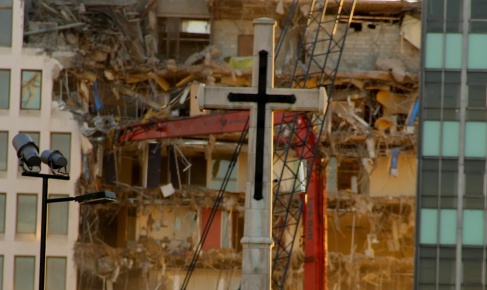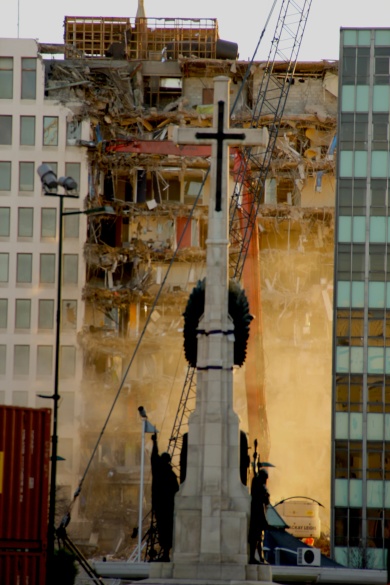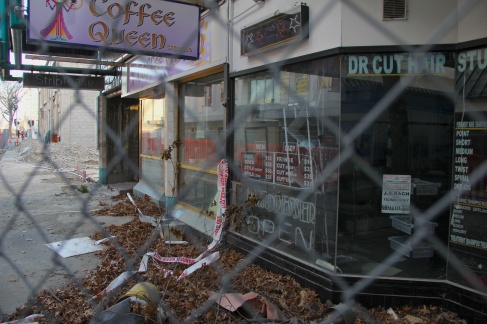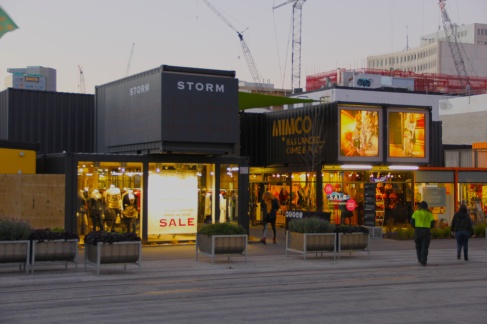I continued my drive early-morning yesterday from Fox Glacier on the West coast of the South Island, New Zealand to Greymouth with Sofie, an Austrian hitchhiker I met in the hostal hot-tub at Fox Glacier. Sofie has been hitchhiking around New Zealand for a few weeks now and was great company for the scenic drive along the coast.
After I said goodbye and dropped Sofie off in Greymouth, I continued up Arthur’s pass on an icy drive in the mountains across the island to the East coast.
My destination was Christchuch, New Zealand’s second-most populous city, to witness the horrible devastation of the recent earthquakes. The city center looked like a war zone and has even been named the Red Zone.
The city center is fenced off with military guards posted at the entrances.
Construction cranes are all over the city and demolition is going on everywhere even though the earthquake was well over a year ago. However, there have been numerous recent earthquakes and aftershocks in Christchurch.
One of the most horrible earthquakes was in February 2011 when 185 people died. There was also a 7.1-magnitude quake on September 4th, 2010 which severely weakened the infrastructure even though there are stringent building codes. They say that the recent earthquakes would have totally flattened most cities around the world. It looks like the city will take many years to recover from this catastrophic event, but some say that the city will never be the same again.
Unfortunately, the quakes and aftershocks are still ongoing and the latest one was about just two weeks ago. 361 plus aftershocks were experienced in the first week after the main shock, the largest measuring a magnitude of 5.9, occurring just under 2 hours after. I can understand why a large amount of the population has moved out of Christchurch. New Zealand is divided between two shifting, tectonic plates. Scientists believe that the earthquake arose from the rupture of an 8 x 8 km fault at about a depth of 1 to 2 km. There were even eyewitness accounts of people being tossed into the air.
Roads and bridges were severely damaged by soil liquefaction. Liquefaction is when the ground become so unsettled it almost liquefies causing cars and homes to sink into the ground. Water and sand spewed out of cracks all over the city and road surfaces were forced up. Some parts of Christchurch can’t be rebuilt on because of liquefaction damage. I was unable to make it to the coastal areas where the most damage was done to the suburbs by liquefaction. 10,000 homes need to be demolished.
Fortunately, Kiwi ingenuity is bringing a new start to Christchurch. They used brightly colored shipping containers to build the first inner city retail offering since the February earthquake. There are 27 retailers open seven days a week and they now call the area “Re:START”.
My heart goes out to all those affected by the earthquakes in Christchurch and I wish them the best of luck in these difficult times.
THE END




























